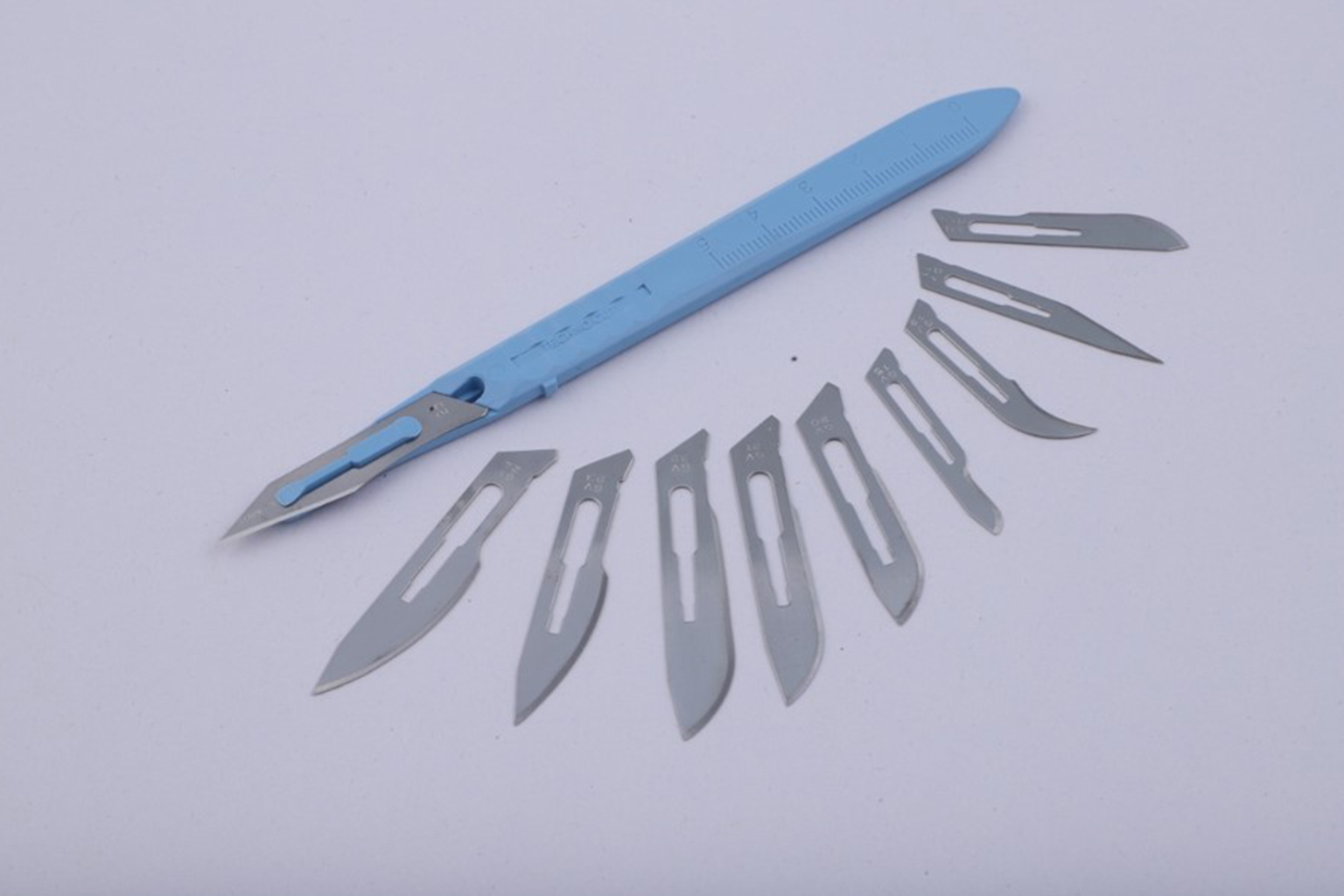

A scalpel blade, also known as a surgical blade is used to cut skin and tissue during a surgical procedure. While for a person from a non-medical background, every scalpel blade may look the same, but that’s not the case. Each blade comes with a specific number engraved on it, which helps in determining the usage of the instrument. To ensure you are using the right scalpel blade, you need to pick a scalpel with the correct number. So, let’s get into the detail about the numbering of the scalpels and their usage.
HMD offers a range of single-use scalpels that ensure precision and are sterilised to eliminate any foreign materials or germs.
Numbering of Scalpel Blades
The number on a scalpel is an indication of its size and shape. In simple words, it is a shorthand code to label the characteristics of a blade. The numbering system dates back to 1915 when Morgan Parker and Charles Russell Brand patented the two-piece design of handle and blade. They found out that using heat to sterilise the instrument dulled the blades and developed the cold sterilisation process to protect the sharpness of the blade. Morgan Parker numbered handles from 1-9 and blades from 10-20. A similar number system is widely accepted in the medical community with a few exceptions due to the expiration of the patents.
Decoding the Number Codes on Scalpel Blades
Scalpel Blade #10
Blade #10 has a large, curved cutting edge that looks similar to the shape of a traditional blade. This scalpel blade is used to make large incisions and cut soft tissues.
Scalpel Blade #11
Blade #11 has a long and triangular shape. The hypotenuse is the sharpest edge on the blade. This blade is used to make short, precise cuts that are not too deep because of its pointed tip.
Scalpel Blade #12
Blade #12 is a small and pointed instrument with a crescent-shaped blade. It is sharper on the inside edge of the curve and is mostly used as a suture cutter.
Scalpel Blade #15
Blade #15 is small and has a curved cutting edge. It is used for making short, precise incisions.
Scalpel Blade #20
Blade #20 is a large and curved blade. It is used to cut tissues and in procedures wherein, the surgeon has to make an incision or puncture.
Scalpel Blade #21
Blade #21 is similar to #20 with a large curved edge. It is also used for procedures where you need to cut tissues or make a puncture.
Scalpel Blade #22
Blade #22 is a larger version of #10. It has a short curved cutting edge that is flat. The back edge is unsharpened. Blade #22 is used to make large incisions, often passing through thick skin.
Scalpel Blade #23
Blade #23 is a leaf-shaped blade that is sharpened along the edge. The blade is used for making long incisions in areas such as the upper midline of the abdomen to repair a perforated gastric ulcer.
Final Words
Surgical blades hold an important place in your set of surgical instruments and must be at par with industry standards in terms of quality and performance. When zeroing on these blades, consider factors such as material, blade shape, spine, edge, and slot. HMD, one of the renowned names in the healthcare industry, offers a complete range of single-use sterile scalpels. Available in two brands- Glass Van and Technocut- the scalpel blades have improved sharpness for added precision. You can check out our range of scalpels here to know more about our range of products.

Add Comment